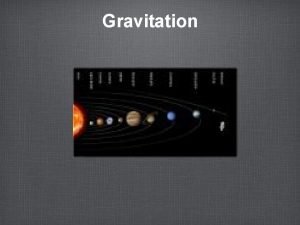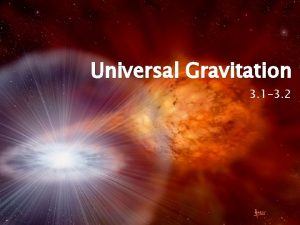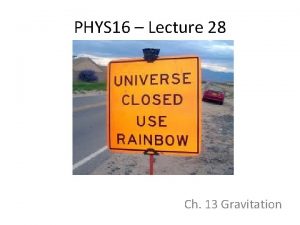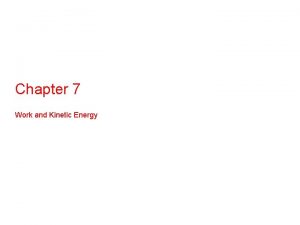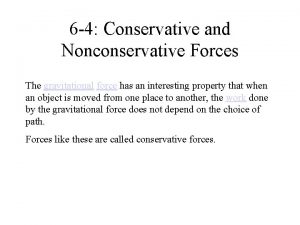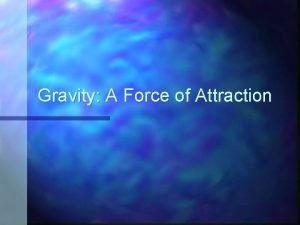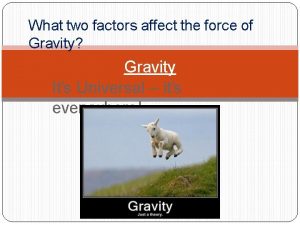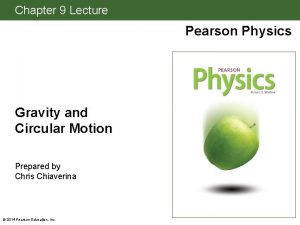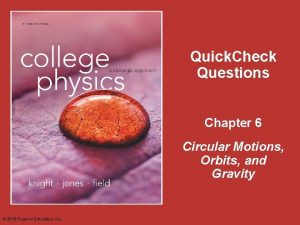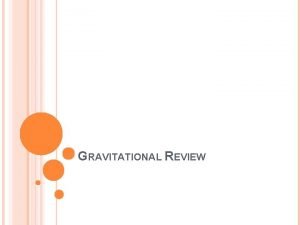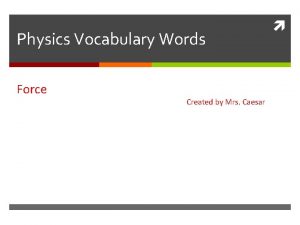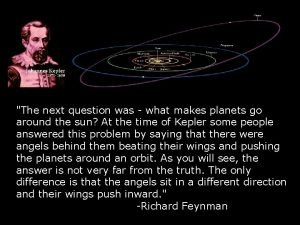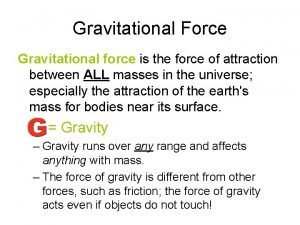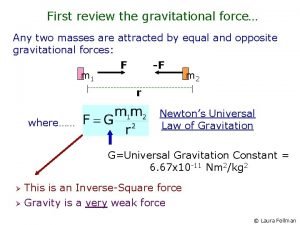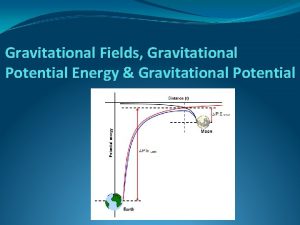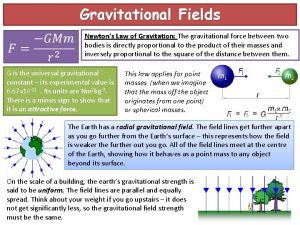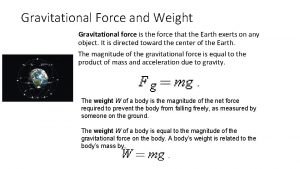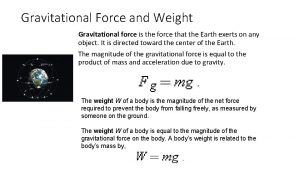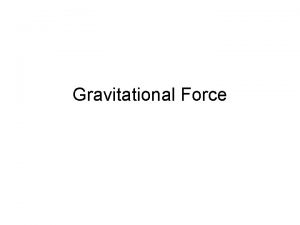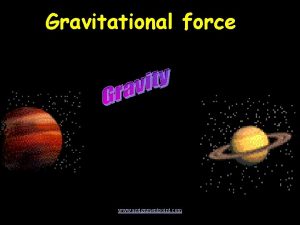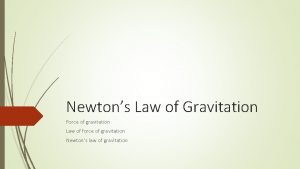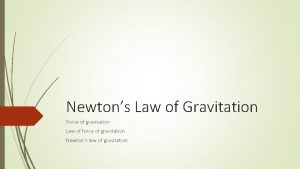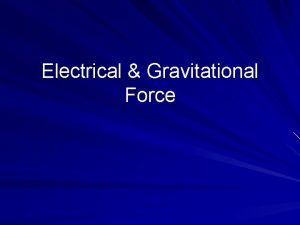Gravitation Gravitational Force the mutual force of attraction














- Slides: 14

Gravitation

Gravitational Force the mutual force of attraction between particles of matter Newton’s Law of Universal Gravitation Fg=G(m 1*m 2/r 2) G= 6. 67 x 10 -11 Nm/kg 2

Force is proportional to the mass times mass Force is inversely proportional to the distance squared or the radius squared

Elliptical Orbits http: //spaceweather. com/swpod 2007/23 oct 07/orbit. gif

Elliptical orbits Perigee greatest force greatest velocity smallest distance

Elliptical orbits Apogee least force least velocity greatest distance

Circular orbits distance is constant velocity is constant Fc is constant

Kepler’s Laws First Law Each planet travels in an elliptical orbit around the sun with the sun as one focal point Second Law- An imaginary line drawn from the sun to any planet sweeps out equal areas in equal time intervals. Third Law- The square of an orbital’s period is proportional to the cube of the average distance between the planet and the sun T 2 is proportional to t 3

Equations T=2π√(r 3/Gm) v=√(Gm/r)

Circular Motion • • • = the movement of an object at constant speed around a circle with fixed radius Axis – straight line around which rotation takes place Rotation – object turns around an internal axis • • Ex. Ice skater Revolution – object turns around an external axis • Ex. Earth around the sun

Rotational Speed • Linear speed – distance/time • Tangential speed – speed along a circular path • Rotational speed – number of rotations per unit of time • Example: Carousel horses travel at same rotational speed but different tangential speed

Centripetal Force • • • Force that causes an object to follow a circular path Ex. Force holding occupants safely in a rotating carnival ride Fnet = mv 2 r

Centripetal Acceleration • • Always points toward the center of the circular motion. Period (T) = time needed for an object to make one complete revolution • Distance traveled = circumference • Circumference = 2πr = πd

Other formulas • • Centripetal Acceleration equals the velocity squared divided by the radius Ac = v 2/r The number of revolutions equals the distance traveled divided by the circumference Revolutions = distance/circumference
 Mutual force
Mutual force Explain newton’s universal law of attraction/gravitation.
Explain newton’s universal law of attraction/gravitation. Centripetal force and gravitational force
Centripetal force and gravitational force Hooke's law vector form
Hooke's law vector form Gravitational force is conservative
Gravitational force is conservative Symbol for the gravitational force
Symbol for the gravitational force What is the effect of gravitational force
What is the effect of gravitational force What two factors affect gravity
What two factors affect gravity Applications of gravitational force
Applications of gravitational force A coin sits on a turntable
A coin sits on a turntable The greatest gravitational force would occur between
The greatest gravitational force would occur between Gravitational force is a
Gravitational force is a Gravitational force images
Gravitational force images Gravitational force
Gravitational force Effect of gravitational force
Effect of gravitational force
